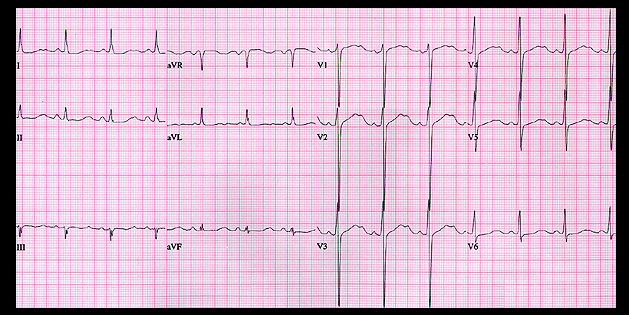
This ECG is from a 62 year old hypertensive male who was seen in the Emergency Department because of muscle cramps, weakness and vomiting. For several years he had been receiving hydrochlorthiazide and diltiazem for treatment of his hypertension. What is your diagnosis?
